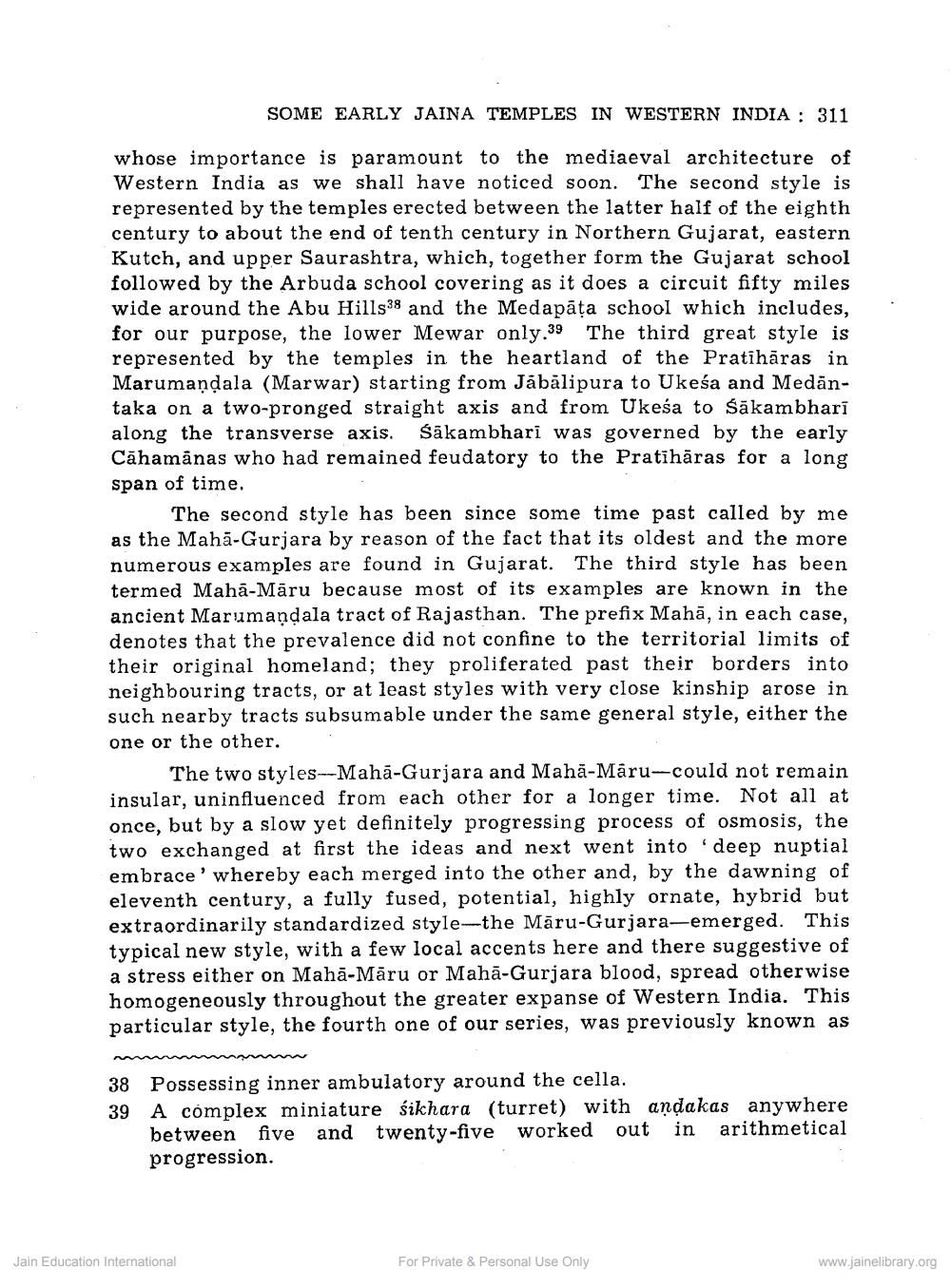________________
SOME EARLY JAINA TEMPLES IN WESTERN INDIA: 311
whose importance is paramount to the mediaeval architecture of Western India as we shall have noticed soon. The second style is represented by the temples erected between the latter half of the eighth. century to about the end of tenth century in Northern Gujarat, eastern Kutch, and upper Saurashtra, which, together form the Gujarat school followed by the Arbuda school covering as it does a circuit fifty miles wide around the Abu Hills" and the Medapāța school which includes, for our purpose, the lower Mewar only. The third great style is represented by the temples in the heartland of the Pratihāras in Marumandala (Marwar) starting from Jabalipura to Ukeśa and Medantaka on a two-pronged straight axis and from Ukeśa to Sakambhari along the transverse axis. Sākambhari was governed by the early Cahamānas who had remained feudatory to the Pratihāras for a long span of time.
The second style has been since some time past called by me as the Maha-Gurjara by reason of the fact that its oldest and the more numerous examples are found in Gujarat. The third style has been. termed Maha-Maru because most of its examples are known in the ancient Marumandala tract of Rajasthan. The prefix Mahā, in each case, denotes that the prevalence did not confine to the territorial limits of their original homeland; they proliferated past their borders into. neighbouring tracts, or at least styles with very close kinship arose in such nearby tracts subsumable under the same general style, either the one or the other.
The two styles-Mahá-Gurjara and Maha-Maru-could not remain. insular, uninfluenced from each other for a longer time. Not all at once, but by a slow yet definitely progressing process of osmosis, the two exchanged at first the ideas and next went into deep nuptial. embrace' whereby each merged into the other and, by the dawning of eleventh century, a fully fused, potential, highly ornate, hybrid but. extraordinarily standardized style-the Maru-Gurjara-emerged. This typical new style, with a few local accents here and there suggestive of a stress either on Maha-Māru or Maha-Gurjara blood, spread otherwise homogeneously throughout the greater expanse of Western India. This particular style, the fourth one of our series, was previously known as
38 Possessing inner ambulatory around the cella.
A complex miniature sikhara (turret) with andakas anywhere between five and twenty-five worked out in arithmetical progression.
Jain Education International
For Private & Personal Use Only
www.jainelibrary.org




